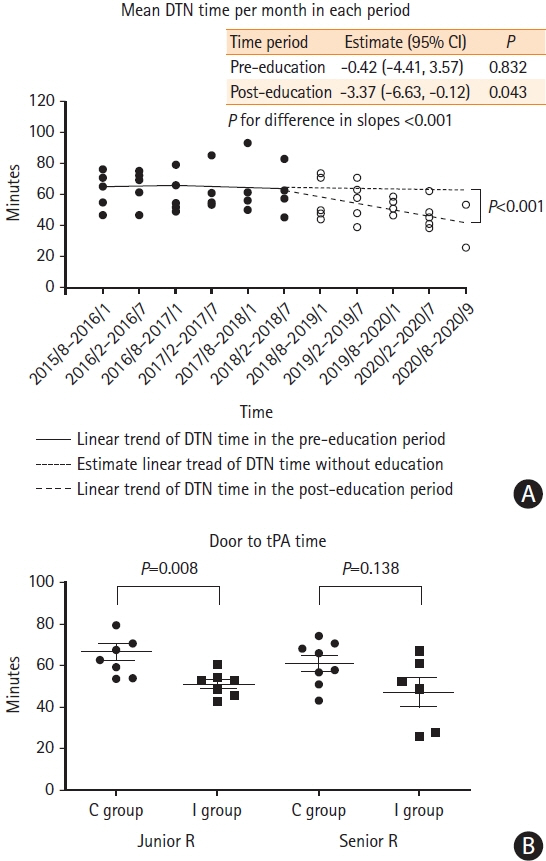J Stroke.
2021 May;23(2):293-295. 10.5853/jos.2020.04910.
Simple but Organized Neurology Residency Training Improves the Quality of Acute Stroke Care: From the Outset to Long-Term Effect
- Affiliations
-
- 1Department of Neurology, National Cheng Kung University Hospital, College of Medicine, National Cheng Kung University, Tainan, Taiwan
- 2Institute of Clinical Medicine, College of Medicine, National Cheng Kung University, Tainan, Taiwan
- 3Biostatistics Consulting Center, National Cheng Kung University Hospital, College of Medicine, National Cheng Kung University, Tainan, Taiwan
- KMID: 2516421
- DOI: http://doi.org/10.5853/jos.2020.04910
Figure
Reference
-
References
1. Moradiya Y, Crystal H, Valsamis H, Levine SR. Thrombolytic utilization for ischemic stroke in US hospitals with neurology residency program. Neurology. 2013; 81:1986–1995.
Article2. Zhou R, Wang M, Huang H, Li W, Hu Y, Wu T. Lower vitamin D status is associated with an increased risk of ischemic stroke: a systematic review and meta-analysis. Nutrients. 2018; 10:277.
Article3. Meretoja A, Strbian D, Mustanoja S, Tatlisumak T, Lindsberg PJ, Kaste M. Reducing in-hospital delay to 20 minutes in stroke thrombolysis. Neurology. 2012; 79:306–313.
Article
- Full Text Links
- Actions
-
Cited
- CITED
-
- Close
- Share
- Similar articles
-
- Issues, improvements and policy directions in residency program in Korea
- Organization of Stroke Care System: Stroke Unit and Stroke Center
- Past, Present, and Future of Family Medicine Residency Training: Transition to the CompetencyBased Training
- Overseas Residency Training Systems and Implications for Korea
- Development of Education & Training Programs for Senile Long-term Care Managers (the 2nd. grade)


